To optimize your market timing with the Stochastic Oscillator, mastering these 7 key tips is essential. Understanding overbought and oversold conditions is just the beginning; delving into Stochastic Divergence and strategic trading approaches can significantly enhance your decision-making process.
By focusing on crossovers and incorporating expert advice, you can refine your market entries and exits for maximum effectiveness. The Stochastic Oscillator holds a wealth of potential for traders, and these tips are your gateway to unlocking its full power.
Understanding Stochastic Oscillator Signals
Understanding Stochastic Oscillator signals involves interpreting key levels to identify potential market reversals efficiently. The Stochastic Oscillator indicates overbought conditions when above 80 and oversold conditions when below 20, serving as crucial signals for traders.
Reversal signals are triggered when the Stochastic Oscillator crosses above 80 or below 20, guiding market timing decisions. It's essential for traders to seek price confirmation alongside Stochastic signals to enhance accuracy. However, traders should be cautious as Stochastic Oscillator signals may sometimes result in false signals, particularly in strong trending markets.
To mitigate this risk, combining Stochastic signals with other technical indicators can significantly improve market timing precision and overall trading strategies.
Identifying Overbought and Oversold Conditions
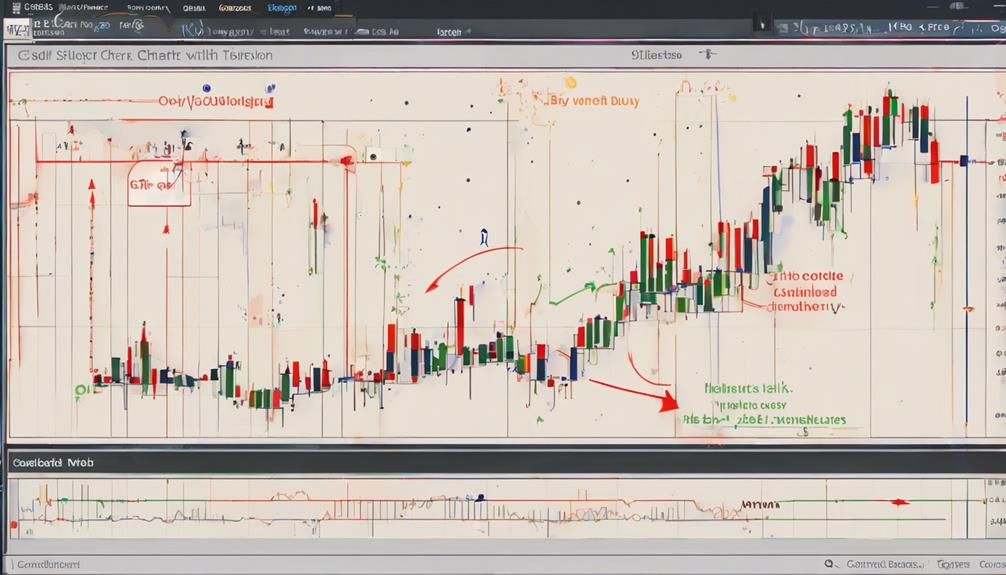
When the Stochastic Oscillator surpasses 80, it indicates an overbought condition, signaling a potential price decline.
Conversely, when the oscillator falls below 20, it suggests an oversold condition, hinting at a possible price increase.
Traders often watch for reversals at these extreme levels to make informed decisions about market entries and exits.
Overbought Signals
Overbought conditions in the Stochastic Oscillator signal potential price reversals when the indicator rises above 80. When the indicator surpasses this threshold, traders should be vigilant for potential market shifts. Here are three key points to consider:
- Anticipate Reversals: Identifying overbought signals allows traders to anticipate potential price reversals accurately.
- Consider Short Trades: Overbought signals often indicate that the asset price may experience a pullback or correction, making it a crucial time to consider short trades.
- Enhance Market Timing: Monitoring overbought conditions with the Stochastic Oscillator aids traders in making informed decisions for effective market timing strategies.
Utilizing these insights can help traders navigate market fluctuations more effectively.
Oversold Signals
Identifying oversold signals on the Stochastic Oscillator occurs when the indicator falls below 20, marking potential buying opportunities for traders. Traders interpret oversold conditions as a sign that the price may have hit a bottom and could reverse higher.
It's crucial to wait for bullish confirmation after an oversold signal to confirm a potential trend reversal. Recognizing these oversold signals is essential for effective market timing, as they can indicate potential buying points in the market.
Utilizing Stochastic Crossovers for Timing
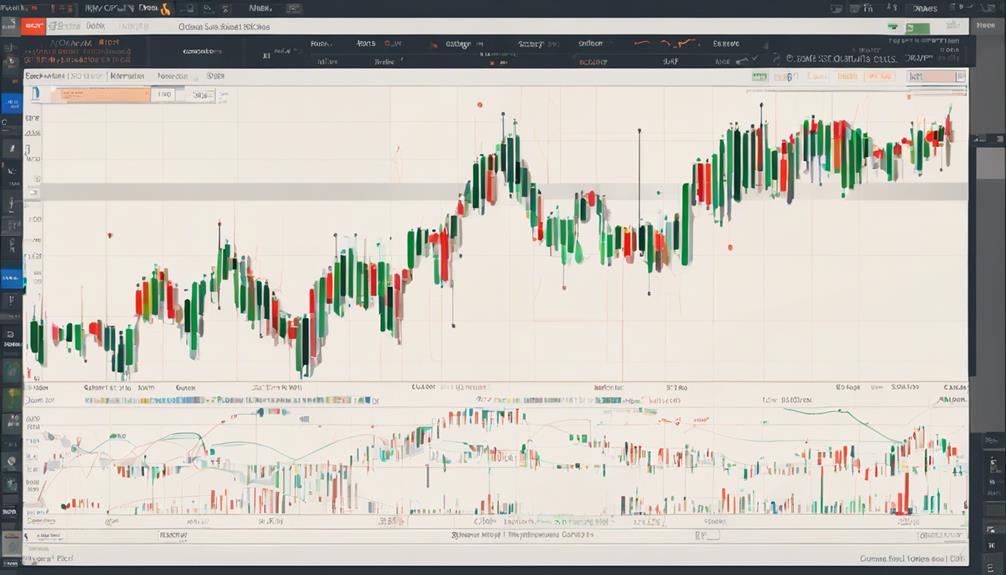
To enhance market timing precision, you can effectively utilize stochastic crossovers as signals for potential trend changes.
When the %K line crosses above the %D line, it indicates a bullish crossover, suggesting a possible uptrend. Conversely, a bearish crossover occurs when the %K line falls below the %D line, hinting at a potential downtrend.
By paying attention to these crossovers, traders can confirm buy or sell signals and make informed decisions in their trading strategies.
Combining stochastic crossovers with other technical analysis tools can further strengthen your market timing skills and help you identify optimal entry and exit points with greater accuracy.
Leveraging Divergence Patterns in Trading
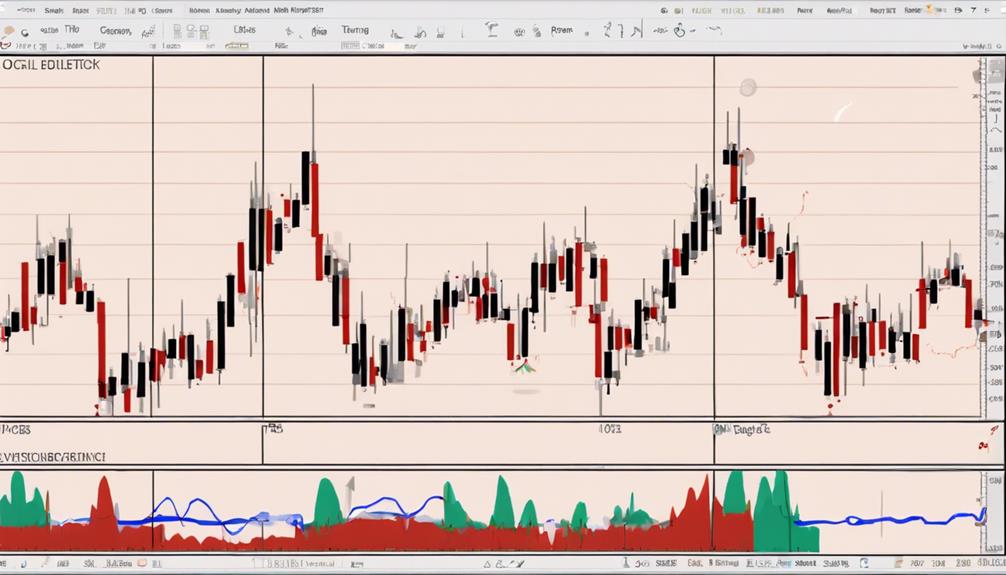
To further refine your market timing skills, incorporating divergence patterns in conjunction with the Stochastic oscillator can offer valuable insights into potential trend reversals and key market turning points.
Bullish divergence occurs when price forms lower lows while Stochastic forms higher lows, suggesting a potential trend reversal to the upside.
Conversely, bearish divergence is identified by price forming higher highs as Stochastic forms lower highs, indicating a possible trend reversal to the downside.
These divergence patterns are strengthened when confirmed by trend line breaks, enhancing the reliability of the signals provided by the Stochastic oscillator.
Setting Optimal Parameters for Precision
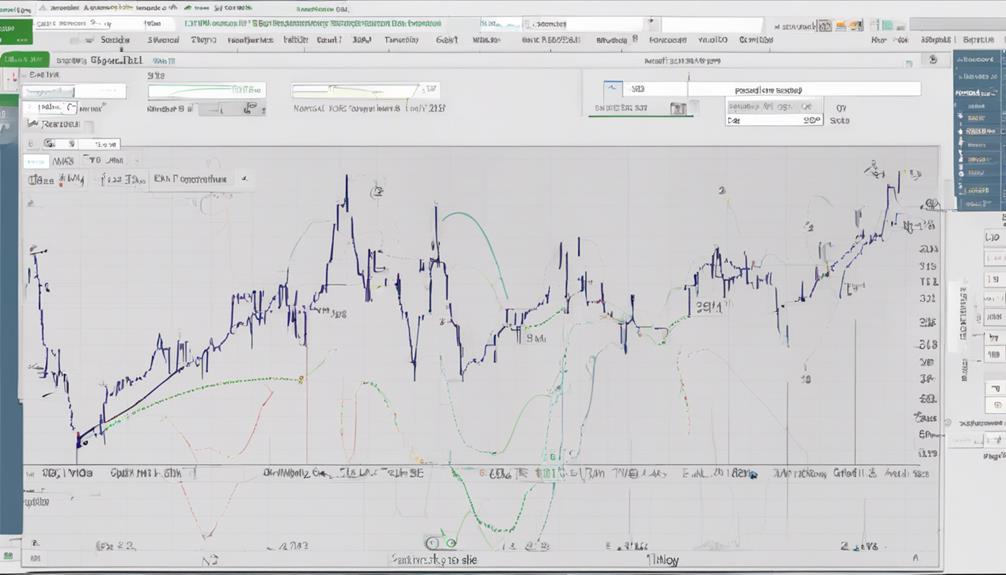
Optimizing the parameters of the Stochastic Oscillator is essential for achieving precision in market timing strategies. Here are some key considerations for setting optimal parameters:
- Adjusting the settings impacts sensitivity: Lower settings provide more signals, while higher settings reduce noise, influencing the indicator's responsiveness to market changes.
- Balancing sensitivity and reliability: A common setting of 8, 3, 5 is often used to spot divergences effectively, crucial for accurate market timing.
- Tailoring parameters to trading style: Traders experiment with different parameter settings based on their unique approaches, market conditions, and preferred timeframes to maximize the Stochastic Oscillator's effectiveness in identifying overbought and oversold conditions.
Implementing Stochastic Strategies for Day Trading
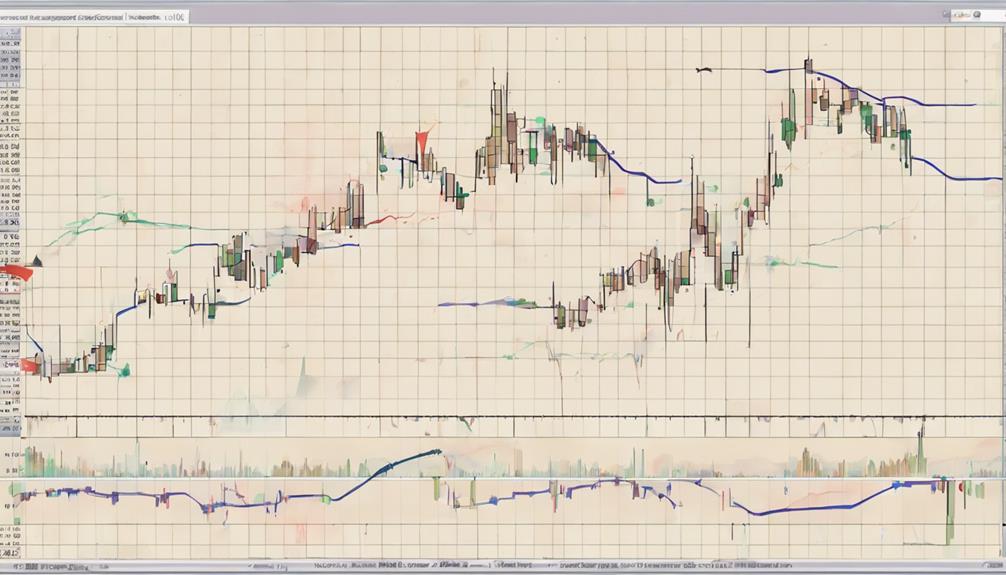
Implementing Stochastic strategies for day trading requires a meticulous approach to leverage intraday charts and capitalize on short-term price movements effectively. Using Stochastic (13,8,8) settings can aid in quick entries and exits for day trading.
Enhancing strategies by combining the Stochastic Oscillator with indicators like Admiral Pivot can improve accuracy. A scalping strategy, focusing on capturing small price movements using Stochastic signals on hourly charts, is common in day trading.
Setting specific rules for long and short trades with Stochastic is essential to optimize day trading performance. By adhering to these methods, traders can enhance their decision-making processes and potentially improve their day trading outcomes.
Monitoring Market Trends With Stochastic
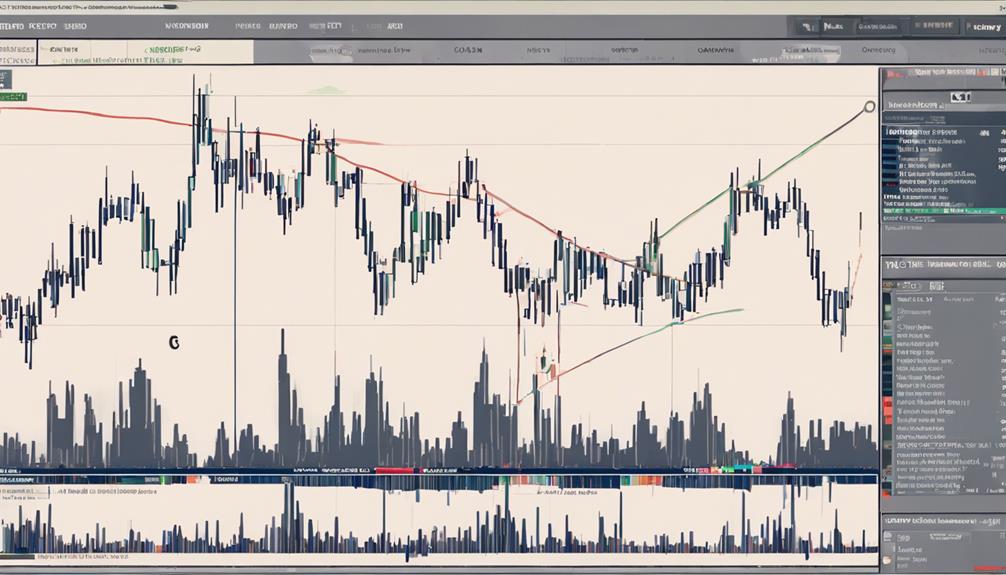
Monitor market trends effectively by utilizing the Stochastic oscillator, a powerful tool for identifying overbought and oversold conditions.
This indicator offers valuable insights into potential trend reversals based on price momentum, aiding in strategic market entries and exits.
Analyzing the %K and %D lines for crossovers and divergences can provide confirmation of prevailing market trends across various timeframes.
Trend Identification Techniques
To effectively identify trends in the market using the Stochastic Oscillator, one must analyze the relationship between the current closing price and a specific range over a defined period.
- Stochastic Oscillator helps pinpoint overbought and oversold levels, indicating potential trend shifts for precise market timing.
- Monitoring trend strength and potential reversals is facilitated by Stochastic through the analysis of historical price data.
- Utilizing Stochastic in conjunction with other indicators can significantly improve the accuracy of trend identification.
Stochastic Indicator Application
Analyzing market trends with the Stochastic Indicator involves interpreting overbought and oversold conditions to determine potential trend reversals based on price momentum. When the Stochastic Oscillator indicates an overbought condition, it suggests that the market may be due for a downward correction, presenting a selling opportunity.
Conversely, an oversold reading indicates a possible upward reversal, signaling a buying opportunity. By incorporating this signal into your trading strategy, you can make more informed decisions on market entries and exits.
Monitoring the Stochastic Indicator allows traders to assess the strength of the current trend and adjust their positions accordingly. Effective analysis of the Stochastic Indicator enhances your ability to time the market accurately and capitalize on price movements.
What Are the Best Tips for Utilizing the Stochastic Oscillator for Market Timing?
When it comes to market timing, traders can enhance their strategies by learning how to trade with stochastic oscillator. By setting the right time frames, using additional filters, and combining it with other indicators, traders can maximize the effectiveness of the stochastic oscillator for identifying potential trend reversals and entry/exit points.
What are the Benefits of Using Stochastic Oscillator for Market Timing?
The stochastic oscillator settings in day trading can provide valuable insights for market timing. By analyzing overbought and oversold conditions, traders can make more informed decisions about entry and exit points. This tool helps to identify potential trend reversals and can contribute to more accurate trading strategies.
Frequently Asked Questions
What Is the Best Time Frame to Trade Stochastic Oscillator?
For trading Stochastic Oscillator, the best time frames are typically 15-minute, 1-hour, or 4-hour charts. Shorter frames like 5-minute can be noisy, while daily may lack signals. Choose based on your goals and style.
What Is the 15 Minute Stochastic Strategy?
When trading with the 15 Minute Stochastic Strategy, you analyze short-term price movements using specific Stochastic settings on a 15-minute chart. This approach helps capture intraday fluctuations for timely entry and exit decisions, aiming to benefit from momentum shifts.
What Is Stochastic 14 3 3?
Stochastic 14 3 3 utilizes 14, 3, and 3 periods to gauge market conditions. Adjust these numbers for your trading style. It pinpoints overbought or oversold scenarios, offering potential signals. Balance sensitivity and noise wisely for effective trading decisions.
What Is 5 3 3 Stochastic Settings?
For quick market insights, set your Stochastic parameters to 5 for %K, 3 for %D, and 3 for smoothing. This hyper-sensitive configuration reacts swiftly to price changes, ideal for active traders seeking rapid signals.
Conclusion
In conclusion, mastering market timing with the Stochastic Oscillator requires precision and patience. By understanding signals, identifying conditions, leveraging crossovers, utilizing divergence patterns, setting optimal parameters, and implementing strategies, traders can enhance their timing skills.
Remember, practice makes perfect in the world of trading. Stay vigilant, stay focused, and strategize smartly to succeed in the ever-changing market landscape.
